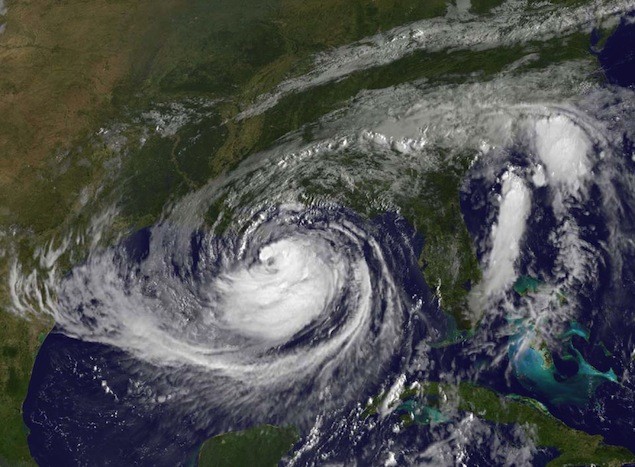Hurricane Isaac smack dab in the middle of the Gulf of Mexico’s oil production. Credit: NASA GOES Project
 HOUSTON, June 11 (Reuters) – The U.S. Energy Information Administration said on Tuesday it expects greater losses in Gulf of Mexico oil and natural gas production from tropical storms than was seen in 2012.
HOUSTON, June 11 (Reuters) – The U.S. Energy Information Administration said on Tuesday it expects greater losses in Gulf of Mexico oil and natural gas production from tropical storms than was seen in 2012.
The EIA said in a study the median loss in Gulf of Mexico crude oil production from tropical storms in 2013 was expected be 19.3 million barrels, up from 14.3 million barrels in 2012.
The EIA expects a median loss of 46.4 billion cubic feet in natural gas output due to the 13 to 20 named storms forecast by the U.S. National Oceanic and Atmospheric Administration for the six-month 2013 Atlantic hurricane season, which began June 1.
The 19 named storms in 2012 hurricane season accounted for 32.1 billion cubic feet in lost natural gas production, the EIA said.
Last year’s season was one of the milder ones to hit U.S. energy production. The total number of named storms was seven above average, but only three tropical storms and two moderate hurricanes came through the Gulf.
SEE ALSO: What 2012’s Hurricane Isaac Taught Us About Hurricanes and Oil Production
The EIA also said the percentage of national crude oil and natural gas production provided by the U.S.-regulated areas in the northern Gulf of Mexico has shrunk in recent years as onshore production has increased.
In 2012, the Gulf provided 19 percent of crude oil production, down from 26 percent in the 2007-2011 period. In 2012, the Gulf accounted for 6 percent of natural gas output, compared to 26 percent in 1997, according to the EIA.
The Gulf produces 1.3 million barrels per day of crude oil, according to the EIA. In 2011, 1.7 trillion cubic feet in natural gas came from the Gulf.
The amount of shut production depends on the intensity of a storm and the path it takes across production areas, according to the EIA.
For example, 2012’s Hurricane Sandy, which struck the U.S. East Coast had no impact on Gulf production. But 2008’s major Hurricane Gustav, which came ashore in Louisiana after passing through the heart of the Gulf’s offshore oil patch, shut 98 percent of Gulf oil production and 96 percent of natural gas output. (Reporting by Erwin Seba; Editing by Marguerita Choy)
(c) 2013 Thomson Reuters, Click For Restrictions

 Join The Club
Join The Club











